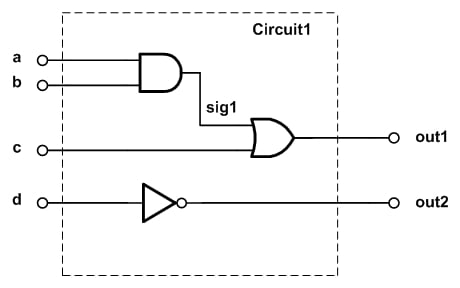Concurrent Benefits Calculator
Benefit Calculators. Plan for retirement by viewing personalized retirement reports, performing 'what-if' exercises to see how your benefits might change, and reviewing related fact sheets. Concurrent Retirement and Disability Pay is the gradual restoration of the retired pay currently being offset by VA disability pay. Concurrent Receipt of Disability Pay (CRDP) CRDP is one of two forms of concurrent receipt. CRSC, Combat-Related Special Compensation, is the other form. ‘Concurrent receipt’ is the restoration of Service retired pay that’s docked due to receipt of VA disability compensation.
A hands-on guide to running the numbers behind your Social Security.
A complex formula determines how your Social Security benefits are calculated. The following factors all go into the formula:
- How long you work
- How much you make each year
- Inflation
- What age you begin taking your benefits
In this step-by-step guide, I’ll show you how these factors impact your benefit amount.
How Is Social Security Calculated?
There is a three step process used to calculate the amount of Social Security benefits you will receive.
Step 1: Use your earnings history to calculate your Average Indexed Monthly Earnings (AIME).
Step 2: Use your AIME to calculate your Primary Insurance Amount (PIA).
Step 3: Use your PIA and adjust it for the age you will begin benefits.
In this article I cover each of these steps and provide tables to show how the calculations work. To follow along, get a copy of your Social Security statement that provides your earnings history, use the data I link to in each section, and plug your numbers into the formulas.
Step 1: How to Calculate Your Average Indexed Monthly Earnings
Your Social Security benefit calculation starts by looking at how long you worked and how much you made each year. This earnings history is used to calculate your Average Indexed Monthly Earnings (AIME) and the calculation includes the highest 35 years of earnings history that you have.
The AIME calculation works like this (an example is shown in a table below):
1. Start with a list of your earnings each year.
Your earnings history is shown on your Social Security statement, which you can now get online.
In the example below actual earnings are shown in Column C. Only earnings below a specified annual limit are included. This annual limit of included wages is called the Contribution and Benefit Base and is shown as Max Earnings in Column H in the table below.
2. Adjust each year of earnings for inflation.
Social Security uses a process called wage indexing to determine how to adjust your earnings history for inflation. There are two main steps in the wage indexing process.
- Each year Social Security publishes the national average wages for the year. You can see this published list at the National Average Wage Index page.
- Your wages are indexed to the average wages for the year you turn 60. For each year, you take the average wages of your indexing year (which is the year you turn 60) divided by average wages for the year you are indexing, and multiply your included earnings by this number.
Example:
- In the example below look at 1984's earnings of $21,000 in Column C.
- The average earnings that year were $16,135 in column D.
- You take $44888.16, the average earnings for the year this person turned 60 (2013 highlighted in bold italics) divided by $16,135, to get the Index Factor you see in Column E.
- Multiply 1984's earnings by this index factor to get $58,423 that you see in Column F.
See two more wage indexing examples from Social Security.
Because of how the wage indexing formula works, if you are not yet 62, your calculation to determine how much Social Security you will get is only an estimate. Until you know average wages for the year you turn 60, there is no way to do an exact calculation. However you could attribute an assumed inflation rate to average wages to estimate the average wages going forward and use those to create an estimate.
3. Use your highest 35 years of indexed earnings and calculate a monthly average.
The Social Security benefits calculation uses your highest 35 years of earnings to calculate your average monthly earnings. If you do not have 35 years of earnings, a zero will be used in the calculation, which will lower the average. In the example above you see the highest 35 years in Column G.

Total the highest 35 years of indexed earnings and divide this total by 420 (which is the number of months in a 35 year work history).
The result: your Average Indexed Monthly Earnings or AIME.
Step 2 - Use Your AIME to Calculate Your Primary Insurance Amount (PIA)
Once you have calculated your Average Indexed Monthly Earnings (AIME), you plug that number into a formula to determine your Primary Insurance Amount, or PIA. This formula is based on something called 'bend points.'
Social Security Bend Points
The Social Security benefits formula is designed to replace a higher proportion of income for low income earners than for high income earners. To do this, the formula has what are called “bend points.' These bend points are adjusted for inflation each year.

Bend points from the year you turn 62 are used to calculate your Social Security Retirement Benefits. The example in the table below uses 2015 bend points. It works like this:
- You take 90% of the first $826 of AIME.
- You take 32% of the next $4,980 of AIME.
- You take 15% of any amount over that $4,980.
- You total those three numbers.
The result is your Primary Insurance Amount, or PIA, the amount you will receive if you begin benefits at your Full Retirement Age (FRA).
Your PIA is rounded to the next lowest dime, and your benefit amount is rounded to the next lowest dollar. (Technically your PIA is calculated, rounded to the next lowest dime, then any inflation adjustments are applied. That number is then rounded to the next lowest dime. Then any increase or decrease based on age is applied. That number is then rounded down to the next lowest dollar. Some of this is covered in the next step.)
You can see current and historical bend points and the current year's bend points on the Bend Formula Bend Points page of the Social Security website.
If you are not yet 62, your benefit calculation is only an approximation, as you do not yet know what the final bend point amounts for the year you turn 62 will be. You can use an estimated inflation rate to approximate future year's bend points to develop a pretty accurate approximation.
In the example in the table at the bottom of this page you can see how the AIME number (calculated in the previous step) was plugged into the bend point formula to calculate the PIA.
Can Your PIA Change After You Reach Age 62?
There are two things that will affect your PIA after you reach age 62:
- Higher Earnings - Earnings in years between age 62 and 70 that are higher than one of the 35 highest earnings year’s previously used in the formula will change your AIME which is used in the PIA formula.
- Inflation - Your PIA will be adjusted by the same Cost of Living Adjustments applied to people who are already receiving Social Security benefits. You can see historical Cost of Living Adjustment Rates on the Social Security website.
***Note: this is not the same adjustment that is used to index wages for inflation.
Word of caution: the biggest reason people get the wrong answer when they run their own calculations on when to begin Social Security is because they take the numbers off their statement and do not properly apply inflation adjustments.
Step 3 - Adjust Your PIA for the Age You Will Begin Benefits
The final amount of Social Security Retirement benefit that you receive is based on the age that you begin benefits.
- The earliest you can begin retirement benefits is age 62 (age 60 if you are eligible for a widow or widower's benefit on a deceased spouse's or ex-spouse's record).
- You get more by waiting until a later age to begin benefits.
Of course, another complex formula is used to determine how much more. An explanation is below and a table shows you an example of how it works.
Social Security Age Adjustments Start With Your PIA
The formula starts by using your Primary Insurance Amount (PIA) calculated in the previous step. This is the amount you will get if you start benefits are your Full Retirement Age (FRA). Your FRA can vary depending on the year you were born. For people born between 1943 and 1954, your FRA is age 66.
**Note if you were born on Jan. 1, your FRA will be based on the year prior. Someone born on Jan. 1. 1955 will have an FRA based on 1954.
- A reduction is applied to your PIA if you begin benefits before your FRA.
- A credit, referred to as a delayed retirement credit, is applied if you begin benefits after your FRA.
Concurrent Benefits Calculator
Reduction formula if you begin benefits before your FRA
- 5/9 of 1%: Your benefits are reduced by 5/9 of 1% per month, up to a maximum of 36 months, depending on how many months you have until you reach FRA.
- 5/12 of 1%: If you are more than 36 months away from reaching FRA, the reduction above is applied, and then for the number of months greater than 36 the formula is changed to a reduction of 5/12 of 1%.
Result:
- 25% reduction: If your FRA is age 66, this means your benefits will be reduced by 25% if you begin taking them at age 62.
Credit for taking benefit later than FRA
- 2/3 of 1% per month, or 8% a year: If you were born in 1943 or later, your benefits will increase by 2/3 of 1% per month (8% per year) for each month that you are past your FRA when you begin benefits. Survivor benefits for a widow or widower will also partake in these delayed retirement credits.
Result:
- 32% increase: If your FRA is 66, this means your benefits will be increased by 32% by waiting until age 70 to begin.
How Inflation Impacts Your PIA
Your PIA is calculated at your age 62. If you wait until beyond age 62, for each year beyond age 62 additional cost of living adjustments will be applied to your PIA. The potential increases based on a 2% inflation rate are shown in the example below on the right side in the 'PIA in Future $'s @ 2%' column. The reduced or increased benefit amounts for different ages are shown on the left in the 'PIA in Today's Dollars' column.
If you have already had most of your 35 years of earnings, and you are near 62 today, the age 70 benefit amount you see on your Social Security statement will likely be higher due to these cost of living adjustments. Many do not account for this when doing their own calculations and this makes them think taking Social Security early is a better deal, when in the majority of cases (but not all), waiting is the better deal.